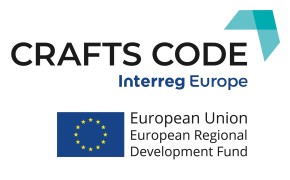Stundars works as a bridge between tradition and modernity and hence promotes sectoral renewal and innovation through differnet activities.
The practice addresses the issue of maintaining and passing on handicraft tradition and skills, and at the same time it promotes innovation and renewal of the handicraft sector through different activities. On one side of the problem is passing on traditions and old skills to young craftspeople, but on the other side is how create new, inspiring and innovative solutions, how to bring elder and younger craftspeople together to learn from each other. This mutual learning aims to conserve handicraft and innovate.
Stundars is a cultural centre and museum. This creates a setting where solutions and methods to approach the aforementioned issues can be implemented. It offers its premises for craftspeople to work, in guilds and with traditional methods, and for different exhibitions and other events. In addition, Stundars has a wide regional and national stakeholder network including guild members, craftspeople, schools, and other organisations and actors.
- Exhibitions are organised in authentic settings: traditional houses surrounded by furnishings and traditional tools. Exhibitions maintain and transmit long-established techniques from the guild members to young craftspeople, students, professionals and public.
- Stundars’ markets showcase various handicraft disciplines and promote local crafts and handmade products. This is a platform where not-yet-established craftspeople have an opportunity to promote their work, making it an important entrepreneurial pathway.
Resources needed
Exhibitions
- Human resources: 10 employees, 40-50 volunteers
- Materials: Guild members bring their own tools, facilities are provided by Stundars.
Markets
- Human resources: 7-8 employees, 40–50 volunteers
- Materials: Facilities are provided by Stundars, sellers can also bring themselves
Evidence of success
Exhibitions
- 200-300 visitors/event; positive visitor feedback
- Guild members networking opportunity
- Increase resource and capability capacities
- High rate of customer return.
Markets
- Mid-autumn markets: circa 50 sellers and 2000-5000 customers
- Christmas markets: circa 70-75 sellers and 4000-8000 customers
- Ample numbers of visitors and buyers to guarantee profit
- Safe trading environment
- Network opportunities for all
- A regular return of sellers and customers.
Difficulties encountered
- External issues, e.g. the COVID-19 pandemic
- Lack of public transportation to Stundars
- Competition for additional funding
Exhibitions
- Difficulty recruiting young craftspeople to join guilds
- Limited themes for exhibitions
- Virtual training: an opportunity or stopping visits
Potential for learning or transfer
Exhibitions: Providing skills, know-how and information exchange enabling innovation is transferable to any country. What is transferred might though benefit of the type of surroundings and premises. At Stundars’, because traditional skills and methods are transferred, the historical setting is essential. Skills-based exhibitions are most suitably transferable to organisations that work with similar concepts and guilds and/or craftspeople working in traditional crafts.
Markets: The essential element in the markets is that the it would enable to showcase new methods and works, and hence new and innovative approaches (e.g. works using the principles of circular economy) and cross-fertilisation of ideas, old and new. Therefore, a simple market is not enough to address innovation. The market platform is an essential place for learning how customers react to products and for exhibitors to learn e.g. what to improve in products, and about own market potential.
Please login to see the expert opinion of this good practice.
Tags: Cultural, Culture, Market, SME








